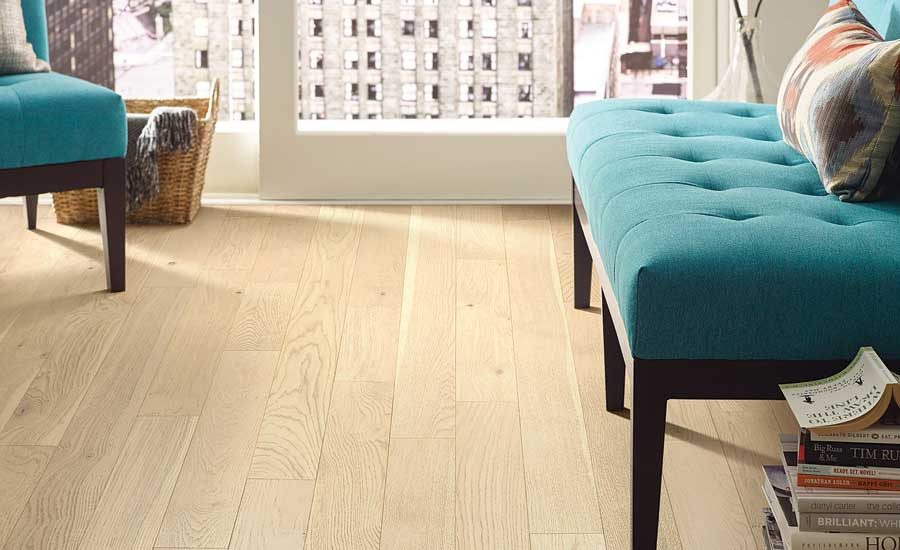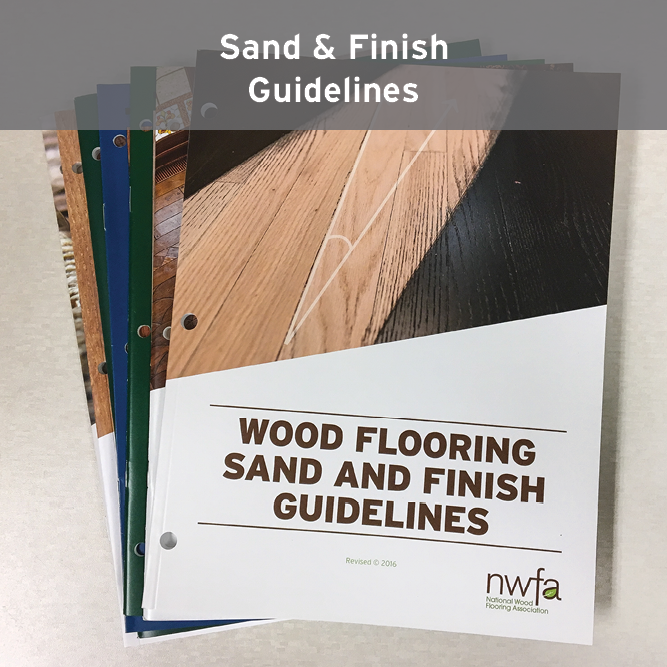Hardwood Maintenance as a Profit Center


Photo Courtesy Mohawk Flooring.

Photo Courtesy Shaw Floors.



After you sell the customer that beautiful hardwood floor, it takes some regular upkeep to keep it looking and performing well for years. While individual maintenance schedules will vary depending on use, wear and lifestyle, hardwood maintenance can be a profitable opportunity for retailers looking to create a new profit center. We spoke with Kelly Ragalie, office and showroom manager for Treadline Hardwoods in Tualatin, Ore., and Allan Jerman, owner of A-Max Hardwood Floors in Boise, Idaho, for some insight on this potentially profitable business.
How did you get into the hardwood maintenance business?
Ragalie: We are both a hardwood flooring contractor and wholesale distributor and have been in business for about 12 years. On the contractor side, we do a number of things. We provide both maintenance services and maintenance programs, depending on what the customer needs. We have a prepaid program where we come back every year to do maintenance services; it just depends on how much they want to invest up front and how much wear and tear they anticipate.
Jerman: A-Max has been in business for 18 years and I’ve owned it for three to four years. It started out with one guy and now we have 12 guys. I used to build Facebook applications, but Facebook changed, so I moved to Boise a few years ago. I went to school and learned about wood floors and learned from the guy who owned the company.
What does your maintenance program work?
Ragalie: We have always provided maintenance guidelines and sold cleaning and maintenance products but started doing more in-depth maintenance programs and offers about three years ago. We now offer deep cleanings, scrub and shines, screen and coats, maintenance consultations, long-term maintenance programs and general cleaning products and guidelines. I would estimate this makes up about 10-15% of our business, not because we don’t have the customers, rather because we don’t have the personnel to provide these services to our customers. However, we market these programs to our current customers in which they are purchasing new wood flooring and/or refinishing existing wood flooring, along with running specials for new customers during slower seasons.
Jerman: We do maybe 20% new installations and maybe 60% refinishing, like resurfacing of the wood, and 10% buff and coats and 10% cleaning.
What are the challenges of staffing this line of work?
Ragalie: We employ all of our own in-house labor. We have 15 employees. On the maintenance side, we keep one to two cleaning technicians on staff. The biggest challenge is finding the right personality with both the ability to explain the process in a concise and professional manner and then also be able to determine which service is appropriate for each customer. It requires on the on-the-job training and experience and the ability to explain the differences to the customer. Also, the ability to upsell on the jobsite with the same person that is physically performing the job is a challenge. Most flooring professionals are used to working on jobsites where there is little interaction with a customer. Then there are sales people who go and sell or estimate a job. In this particular field, you need someone who is both. We have a shortage of labor in the flooring industry anyhow, and this just adds another layer to that critical job description.
Jerman: I was trying to hire some older people for this work, but the problem was they don’t want to conform to the new machines I have because they say it’s too easy. I’ve scaled back a bit from 14 to 12 employees, finding people who are little younger and willing to learn. They are all employees, paid by the hour instead of by the job because I don’t want them rushing through a job.
What kind of training does this business require?
Ragalie: We train all of our own staff. We might have someone who has a little more experience in customer service and then train them on hardwood 101 and put them on hardwood flooring jobs so that they understand that side of the business and then teach them the cleaning side of the business. They don’t have to have a master’s degree in wood floors. They just have to understand that things can go wrong and they have to be able to troubleshoot on the spot.
Jerman: I went to National Wood Flooring Association to get certified and I got certified on gym floors and then went to Bona, American Sanders, Basic Coatings and other trainings. I usually go to something once every three months.
What are some of the challenges of this maintenance business model?
Ragalie: A challenge is time vs. money. During our slower months and weeks, it’s easy to book up maintenance projects and maintain profits. But then when we start to get busy, and have larger jobs, unless we have a dedicated crew just for maintenance projects, it makes more sense to decline some of the smaller maintenance projects. Generally, they have to wait to book projects versus having someone available right away. That can sometimes be frustrating for a customer, who thinks it’s just a quick, easy project.
Jerman: Customers do not understand maintenance of wood floors. They think it’s a once and done and every 10 years you have to start over. They don’t understand how warranties work and how maintenance affects it. I’ve been trying to educate people from the start of a job and then follow up every couple of years. It’s going to take five to 10 years to do build up enough business to do only maintenance.
How do cleaning and maintenance products and equipment and fit into your process?
Ragalie: We private label our own cleaning products, Swedish Summit Rena Cleaner. We sell these in spray bottles, concentrates, and use this for all of our maintenance cleanings. We also sell commercial-grade aluminum mops, microfiber and dust cloths, tile and stone cleaner, and dry cloths. We try to give a good value to our customers by providing them with high-quality maintenance products. It’s very easy to go to a big box store, or the local grocery store, and pick up the name brand products, but they are often cheap and filled with chemicals and additives that ruin floors (i.e. acrylic). So, we provide the maintenance products that our finish and flooring manufacturers recommend, and the ones we have personally tried and found to be the best in the industry. We have then put our name on it, and will stand behind it 100%. We also tie this into our finish and flooring installation warranties. We require that regular on-going maintenance, using our recommended products, be used on our projects to maintain any warranties. It’s very easy to do a chemical test or visual inspection to see what they have or haven’t been using. We also send out reminder emails every year, indicating that it’s time for a deep cleaning, or maybe even a screen and coat, depending on the level of wear and tear.
Jerman: I will try different equipment brands, and if I don’t like one, I will sell it. I just keep trying new things. We use American Sanders, Wagner, Cherry Hill, Dewalt and Bona. We use water-based coatings and it’s the easiest for immediate work. We still use Glitza for specific jobs. We also use a lot of DuraSeal stains.
How do you market the services in your community?
Ragalie: We run some promotions with Angie’s List where we can run a Big Deal and someone can push a button and sign up right there. We will run specials where we offer $300 of cleaning for $99. Whether it’s the correct job they are signing up for is sometimes a question, but it opens the conversation and you can upsell a little. We run a few specials and coupons in Clipper magazine, and a few of those jobs turned into refinishing services over time.
Jerman: We have a lot of word of mouth. I used to do SEO [search engine optimization], so I get a lot of leads that way. I met a guy in this business who moved to Hawaii and I helped him get from zero leads to 10 calls a day through SEO.
What advice would you give others who want to get into this line of work?
Ragalie: I would tell contractors that it’s a great opportunity to grow your business. Often installers only want to do the big jobs, but maintenance provides us with a way to connect with customers who we may never have spoken to and it also builds loyalty. Sometimes customers need maintenance services and they aren’t quite ready for the big refinishing investment, but a year or two down the road they will know you and your employees and call you. If you were to push them into a refinishing that they weren’t ready for, it can turn them off.
Jerman: It’s going to be a lot of trial and error to get to the point where you feel like you can do a floor 10 times and get 10 good results or 100 times and get 99 good results. I recommend writing everything down so that you have notes on everything. I’m a big planning person, so you need a record of what works. This is a great job if you want to do it by yourself or you can build it to where you have 30 crews.
Looking for a reprint of this article?
From high-res PDFs to custom plaques, order your copy today!












